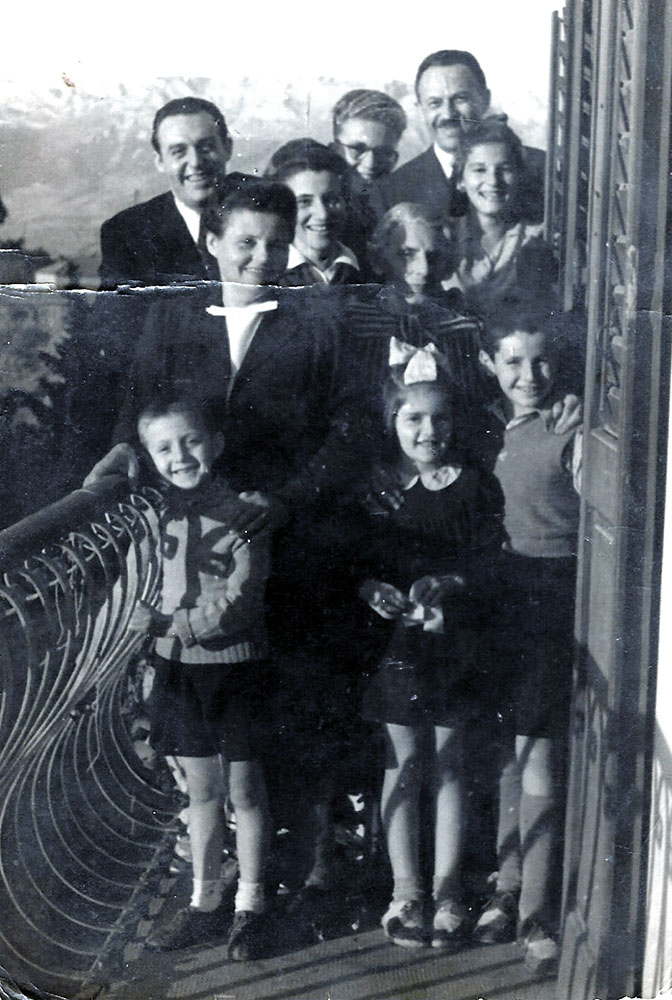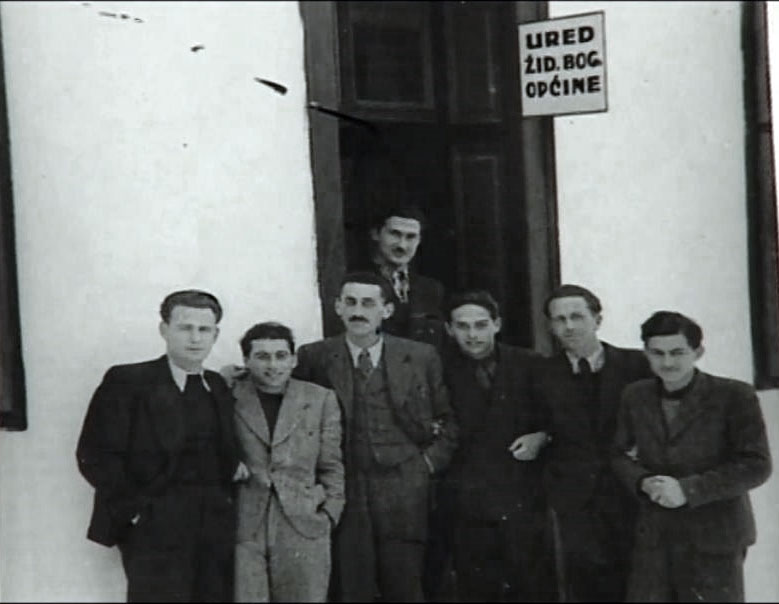Ignac-Eliyahu Weiss, Director of the Jewish Retirement Home in Zagreb
Ignac-Eliyahu (Ilia) Weiss, an active member of the Jewish community in Zagreb, Director of the Jewish retirement home, and an installation engineer by profession, lived in Zagreb with his Croatian wife Bariza and their daughter Mira. Due to his field of expertise, Weiss was sometimes called on to repair the plumbing in the Levorgrad concentration camp near Zagreb. The fact that his wife was Croatian also gave him comparative freedom of movement and action. He would bring Levorgrad inmates clothes, food and medicines, and helped them as much as he could.
In the summer of 1942, Ignac Weiss took Gabriel Shenar-Sternberg, then nine years old, his sister Leah and their cousin Leo Herman, who were both five years old, from the place in which the Ustasha (Ustaša) had gathered the residents of the retirement home, where the three children had also been living. He found them a hiding place in Zagreb. A day or two later, the residents of the retirement home were deported to their death.
Read more about Ignac-Eliyahu Weiss and the children he rescued during the Holocaust >>>
Rescuing Children in the Djakovo Camp, Croatia
In April 1941, the Germans and the Italians occupied Yugoslavia. As part of their plan to dismantle Yugoslavia, the Germans established a puppet state, Independent Croatia, under the leadership of Ante Pavelić, the head of the racist Ustasha (Ustaša) movement. In late November 1941, the Ustasha security authorities issued an order to the Jewish community of Osijek to find a location to confine some 2000 women and children. The Osijek Jewish community heard that in the town of Djakovo there was an abandoned flour mill belonging to the church, which could house a large number of people. The Ustasha appropriated the flour mill and on 2 December, some 1,200 women and children, mostly from Sarajevo were brought there. On 20 December another 700 people were added.
The Osijek community funded the construction, and organized food, clothes and medicines for the prisoners. The Vinkovci Jewish community also collected food and clothes for the camp prisoners. Due to the efforts of the Osijek Jewish community and the bribes that were paid to the local police, the policemen permitted the removal of children from the camp and their safe passage to Jewish families in Osijek and Vinkovci. Read more about rescuing children in the Djakovo camp >>>
Dina Büchler-Chen: The Story of a Child in Hiding in Yugoslavia
Dina Büchler-Chen was born in April 1940 in Zagreb, Yugoslavia (today Croatia), to Dragotin and Blanka Büchler. In April 1941, Dragotin was sent to the Jasenovac concentration camp, where he was murdered. Dina, her mother and grandmother were sent to various camps, ending up at the Loborgrad camp adjacent to Zagreb. By the end of 1941 Dina was very sick and malnourished, and one of the camp guards helped smuggle her out of the camp. Her mother attached a note to the baby’s neck with her name, date of birth, and the names of two relatives to whom she should be given. The guard left the “package” at the Jewish Community Center in Zagreb. Through the note, the people who found her knew to pass her on to Blanka Ziczer-First, Dina’s mother’s cousin. Blanka watched Dina for a number of months, but fearing for her own life, gave her to a local farmwoman and fled to join the partisans. Read the story of the rescue of Dina Büchler >>>









